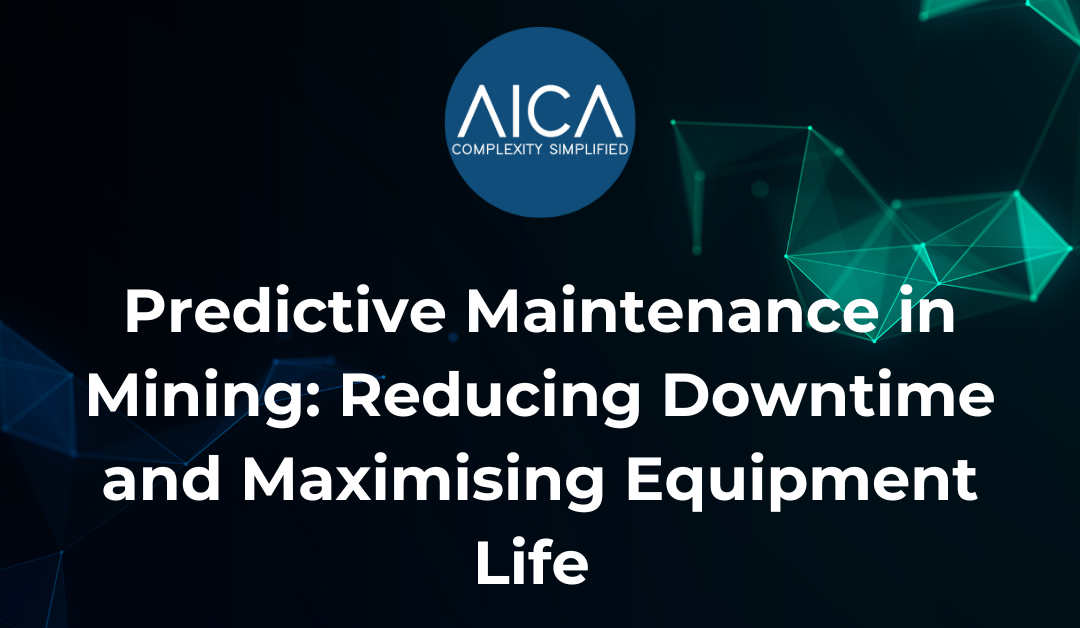In the mining industry, where operational uptime directly correlates with profitability, equipment failure is more than an inconvenience—it’s a costly disruption. That’s why predictive maintenance has emerged as a transformative solution for mining operations looking to reduce unplanned downtime, extend asset lifespans, and improve overall efficiency.
What is Predictive Maintenance?
Predictive maintenance (PdM) is a proactive approach that uses real-time data and analytics to predict when equipment is likely to fail, allowing organisations to schedule maintenance before a breakdown occurs. This contrasts with reactive maintenance (after failure) and preventive maintenance (based on fixed schedules), both of which are less efficient and more expensive in the long run.
PdM typically relies on inputs such as:
- Sensor data (vibration, temperature, pressure, noise)
- Historical maintenance records
- Machine learning models
- Asset performance management (APM) systems
By continuously monitoring equipment and analysing performance trends, mining companies can identify early warning signs of mechanical issues and take timely action.
Why Predictive Maintenance is Critical in Mining
Mining operations rely heavily on complex, high-value equipment such as draglines, haul trucks, crushers, and conveyors. These assets operate in harsh environments and are subject to extreme loads, dust, vibration, and heat. Without proper maintenance, they are prone to sudden failure—often with costly consequences.
Key benefits of predictive maintenance in mining include:
1. Reduced Downtime
Unexpected equipment failure can halt production, delay projects, and disrupt the supply chain. PdM helps detect problems early, allowing for scheduled maintenance that minimizes production interruptions.
2. Lower Maintenance Costs
By fixing issues before they escalate, PdM helps avoid major repairs and reduces the need for emergency service calls, which are typically more expensive.
3. Extended Equipment Lifespan
Predictive insights ensure machinery is maintained only when needed—not too late, and not too early—preserving asset condition and avoiding unnecessary component wear.
4. Improved Safety
Malfunctioning equipment in mining environments can pose serious safety risks. Predictive maintenance helps avoid catastrophic failures that could endanger workers.
5. Optimised Spare Parts Inventory
Knowing when parts will need replacement allows maintenance teams to manage inventory more effectively, reducing the need for costly overstocking or last-minute orders.
Common Use Cases in Mining
- Haul Trucks: Monitoring engine performance and tire pressure to predict drivetrain or tire failure.
- Conveyor Belts: Analysing motor temperatures, belt tension, and vibration to detect misalignment or wear.
- Drill Rigs: Tracking hydraulic pressure and drill bit rotation speed to forecast mechanical breakdowns.
- Crushers: Monitoring gear and bearing conditions to prevent breakdowns during peak production times.
Enabling Predictive Maintenance with Clean Data
A successful PdM strategy relies heavily on the quality of the underlying equipment and asset data. That’s where AICA comes in.
At AICA, we help mining organisations clean, enrich, and structure their product and maintenance data, making it usable for advanced applications like predictive maintenance. By integrating our Agentic AI into your ERP or EAM system, we ensure that sensor data is tied to standardised product records, technical attributes, and maintenance history—creating a single source of truth for PdM analytics.
Conclusion
Predictive maintenance is rapidly becoming a cornerstone of efficient, safe, and cost-effective mining operations. By investing in PdM strategies—and the clean data required to support them—mining organisations can achieve higher asset reliability, lower operating costs, and greater operational resilience.
Want to enable predictive maintenance in your mining operations?
Reach out to AICA to learn how structured, enriched product data can power your asset performance initiatives.
Copyright Reserved © AICA Data International Ltd 2025

